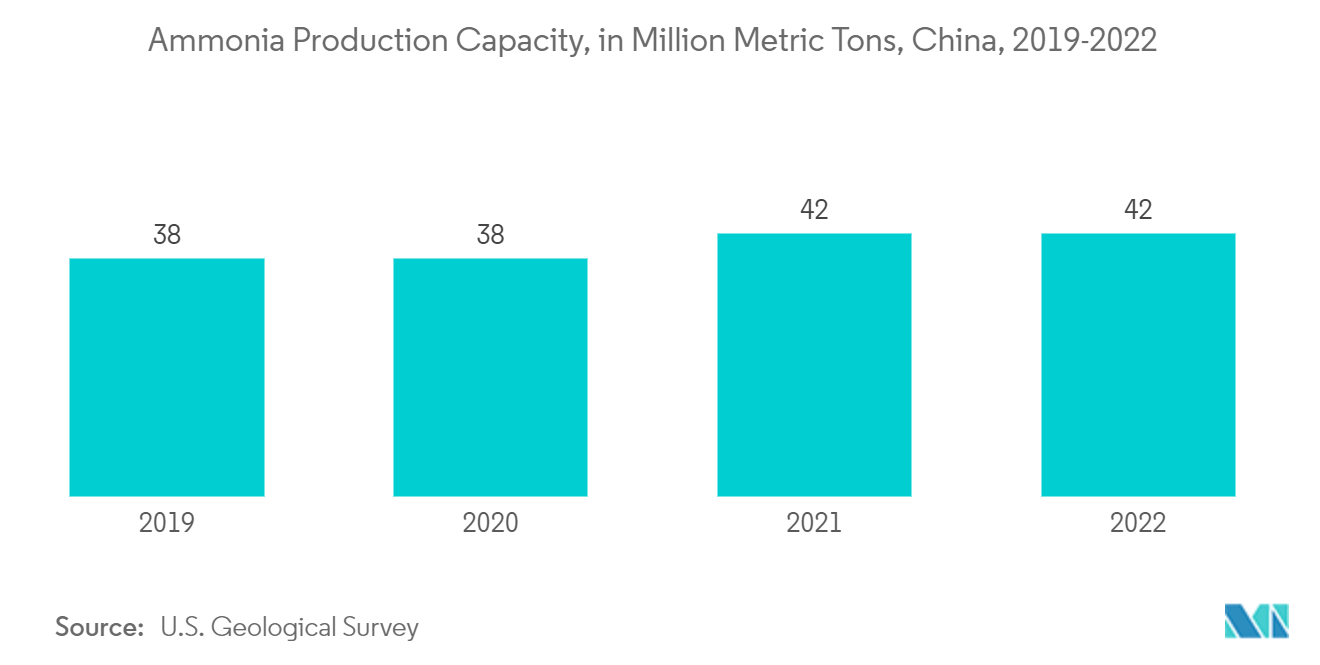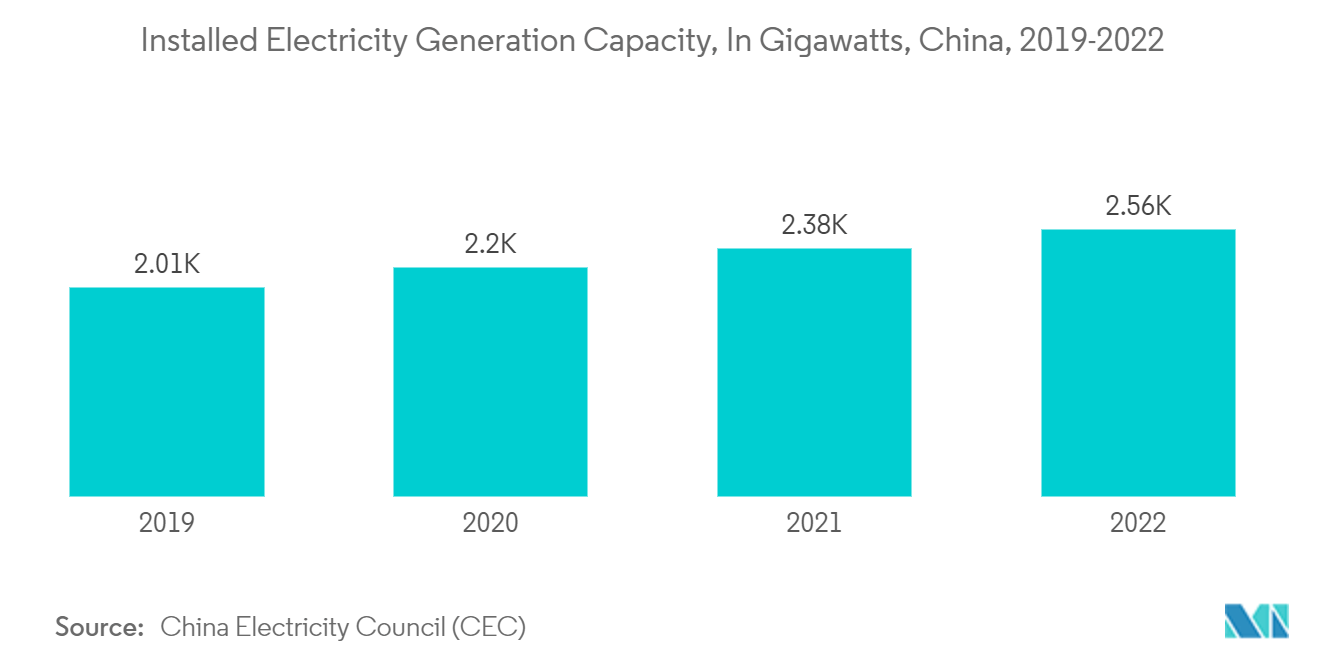Market Trends of Asia-Pacific Syngas Industry
Ammonia Application Segment to Dominate the Market
- Syngas is a byproduct of the industrial synthesis of ammonia and fertilizer. Throughout this process, methane (from natural gas) reacts with water to produce carbon monoxide, and hydrogen (from natural gas) reacts with water to produce carbon monoxide and hydrogen. The gasification process is used to transform any carbon-containing substance into longer hydrocarbon chains.
- Through the Haber-Bosch process, syngas can be turned into ammonia, which is a standard part of fertilizers. During this process, nitrogen from the air is mixed with hydrogen from the syngas to make ammonia, which can then be used to make different kinds of fertilizers.
- Using syngas as a source of raw materials to make fertilizer has a number of advantages. For example, syngas can be made from a number of different materials, which gives companies more options and makes them less reliant on a single raw material. Also, making syngas from biomass by gasifying it can help cut down on greenhouse gas emissions compared to making fertilizer from fossil fuels.
- China accounts for approximately 7% of the overall agricultural acreage globally, thus feeding 22% of the world’s population. The country is the largest producer of various crops, including rice, cotton, potatoes, and others. Hence, the demand for ammonia, which is used as a fertilizer, is rapidly increasing owing to the large-scale agricultural activities in the country.
- China is the largest producer and consumer of ammonia in the world. According to the US Geological Survey (USGS), the country produced 42 million metric tons in 2022. The demand for ammonia in the country is rising due to increasing applications in the agriculture industry, such as fertilizers, textiles, pharmaceuticals, and mining.
- Similarly, in India, the demand for ammonia is increasing in the agriculture, textile, and chemical industries. Thus, various companies are increasing their ammonia production capacity in the country. For instance, in May 2023, Deepak Fertilisers and Petrochemicals Corporation (DFPC) announced that it would be commissioning a new USD 522.5 Million ammonia plant and start production by the start of the second half of this year. The company is adding a capacity of 5,00,000 million tonnes per annum (MTPA) at Taloja in Maharashtra, which would take the total ammonia capacity to 6,28,700 MTPA.
- Thus, the increasing demand for ammonia is expected to drive the demand for syngas in the region during the forecast period.

China to Dominate the Asia-Pacific Market
- In the Asia-Pacific region, China is the largest economy in terms of GDP. China is one of the fastest emerging economies and has become one of the biggest production houses in the world today. The country's manufacturing sector is one of the significant contributors to the country's economy.
- In China, the demand for syngas is increasing from power generation, chemicals and fertilizers, liquid fuels, and gaseous fuel applications. Thus, various companies are increasing the production capacity of syngas in the country, thereby driving the market.
- In China, Air Products was awarded a long-term onsite contract to supply syngas to Jiutai New Material Co. Ltd for its high-value mono-ethylene glycol project in Hohhot, China. The facility is designed to produce over 500,000 Nm3/hr of syngas, comprised of five gasifiers, two approximately 100,000 Nm3/hr air separation units (ASU) with syngas purification and processing, and associated infrastructure and utilities.
- China is a significant producer and exporter of fertilizers, particularly ammonia-based fertilizers. The country is home to several significant chemical businesses that specialize in fertilizer manufacture, and its ammonia-based fertilizers are in high demand both domestically and internationally.
- In the chemical industry, syngas is used to make chemicals and fuels. To make syngas, coal, petroleum coke, and biomass are turned into gas. In the chemical business, syngas is used to make methanol, ammonia, and hydrogen. Through the "gas-to-liquids" (GTL) process, carbon monoxide and hydrogen react to turn syngas into methanol. Methanol can be used to make formaldehyde, acetic acid, and other things.
- Syngas is both a fuel and a raw material. It can be used to heat boilers and heat exchangers in chemical plants and for other high-temperature industrial uses. According to the BASF chemical outlook report, the chemical production capacity in China will increase by 7.7% in 2022 as compared to the growth rate of 6.6% during the previous year. Thus the growth in the chemical industry is expected to drive the demand for syngas in the country.
- Increasing power generation in the country is boosting the demand for syngas. According to the China Electricity Council (CEC), in 2022, the power generation capacity in the country is registered at 2559.4 gigawatts, as compared to 2376.1 gigawatts of power generation capacity in the previous year. Thus, the increasing power generation capacity is expected to drive the demand for sungas in the country.
- Thus, the growth in chemical, fertilizer, and power generation industries is expected to drive the market for syngas in the country.

